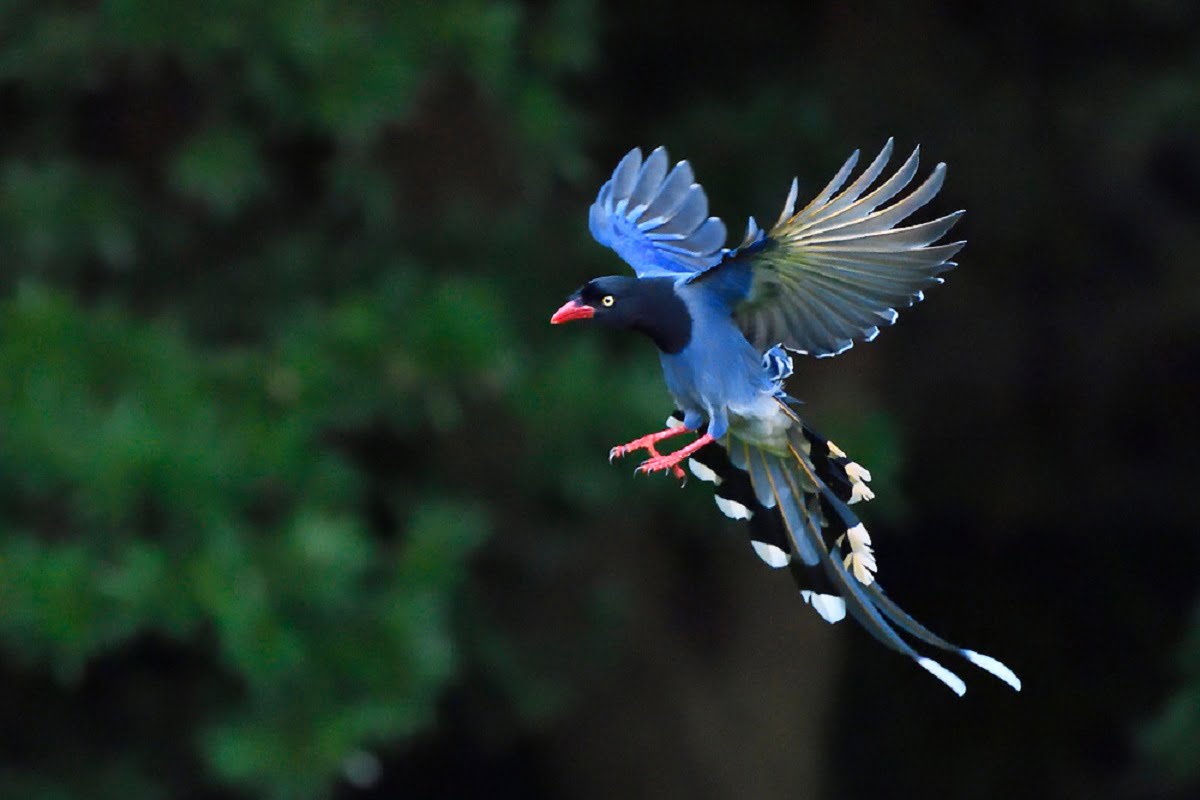Taiwan Blue Magpie (Urocissa caerulea), also called Taiwan Magpie or Formosan Blue Magpie or “Long-tailed Mountain Lady”. It is a species of bird in the crow family. It is one of the native plants of Taiwan. The Taiwan blue magpie was collected by Robert Swinhoe and described by John Gould. Swinhoe translated the magpie’s name into English, calling it the “long-tailed mountain-nymph”. This species is considered monotypic.

The Taiwan Blue Magpie bird is native to Taiwan. It lives in broadleaf forests at altitudes of 300–1,200 m (980–3,940 ft). It is 63–68 cm (25–27 in) in length. The tail length is about 34–42 cm (13–17 in) and the wings are 20 cm (7.9 in) long. It weighs 254-260 grams.
Male and female birds are similar. The Head, neck and breasts are black in colour. Their eyes are yellow, and their legs are red. One can see the white colour in the wing and tail feathers. But the flight feathers are light grey in colour. The central pair of tail feathers is the longest. Other tail feathers have black bands.
Taiwan’s blue magpie is not very afraid of humans. They are found near human settlements on hills or in newly cultivated fields. They are gregarious and usually found in groups of three to twelve. Birds often follow each other and fly in a line. This is sometimes called a “long-tailed formation”.
Taiwan Blue Magpies are scavengers and omnivores. Their diet includes snakes, rodents, small insects, carrion, eggs and young of other birds, plants, fruits and seeds. They also eat human food waste. They sometimes store soil residues and cover them with leaves for future recovery. Sometimes they store food in leaves or twigs.
